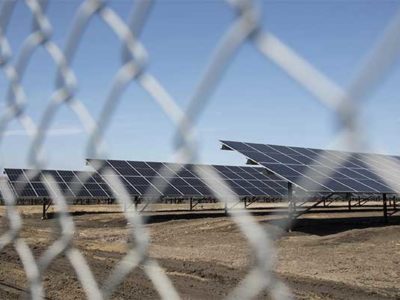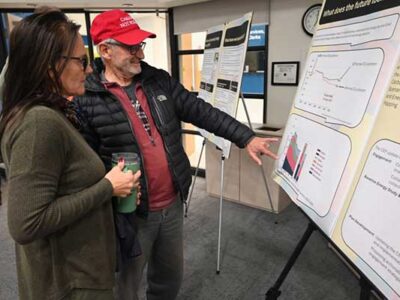Ontario’s electricity system is staring down a 75% surge in demand by 2050, forcing a rapid expansion of generation, storage, and transmission, according to the Independent Electricity System Operator’s (IESO) latest Annual Planning Outlook.
The new forecast — sharply up from 60% growth predicted a year ago — highlights the accelerating energy needs of a province undergoing a deep industrial and technological shift.
EVs, Data Centres, and Electrification Redraw the Map

The sun sets behind Hydro wires in the Hamilton, Ont., steel mills area in a file photo from Nov. 23, 2018 (JournalPioneer).
Key drivers include a massive push into electric vehicle production, a wave of AI-powered data centres, and widespread electrification across transportation and heavy industry. Ontario is also bracing for a dual-peak system by 2030, where summer and winter demand hit similar highs — a structural shift last seen decades ago.
Industrial demand alone — especially from battery materials, hydrogen production, and new mining projects — is expected to reshape regional load patterns, forcing urgent transmission upgrades.
Building Fast — and Building Smart
The IESO’s strategy leans heavily on diversifying supply: new generation and storage projects, expanded nuclear capacity, and aggressive energy efficiency programs. A $10.9 billion investment in demand-side management over the next 12 years is meant to shave costs and delay peak system needs.
But getting power where it’s needed remains a looming hurdle. Major transmission expansions — especially around Toronto, Niagara, and Northern Ontario — will require fast-tracked approvals and unprecedented coordination with municipalities and Indigenous communities.
Trade Risks, Climate Pressures Loom Large
The report flags serious uncertainty tied to U.S. tariffs on Canadian goods — signed into executive order in early 2025 — which could dampen economic activity and reshape demand forecasts. Climate risks are another wildcard: rising temperatures and extreme weather could increase system stress, particularly on older assets.
No Time to Waste
With demand racing ahead and infrastructure aging, Ontario’s electricity future will be shaped by how quickly — and decisively — policymakers, utilities, and private sector players act.
“Expanding the grid enables growth, innovation, and security,” the IESO notes. The window to act, however, is closing fast.














Comments